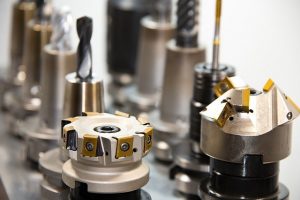
The old commercial construction adage goes something like this: if a piece of heavy machinery like an earth mover is sitting around collecting rust in the yard, it’s not making you any money. Purchasing and/or leasing construction equipment can come at a heavy-duty cost which only adds to your overhead. That’s why it pays to decide early on if you plan on purchasing new equipment outright or if it makes more sense to lease not with a bank, but with a specialized lender.
Says Heartland Financial Group, a manufacturing equipment financing and leasing company located in the U.S., “Financing heavy construction equipment with a specialized lender or seeking out equipment leasing, can actually help you get a loan at lower qualifications than those required by a traditional legacy bank.”
It also does away with the strain of purchasing new equipment outright or, for that matter, settling for the second-hand market upon which a piece of machinery might be in the shop more than it is in the field making you money. To help you get started it is worth checking out some power industry experts in your local area, to help you and your business do what is in the best long-term interest of your customer.
But that said, what exactly is the outlook for heavy construction equipment leasing in the U.S. for 2022? According to a new report, rental rates are expected to increase substantially in some areas like earth movers and cranes. This is a direct result of inflation and the overall higher costs of doing business in the new, highly regulated political environment. This is not good news for capital acquisition either.
Rental Rates Committee
Experts say the ultimate decision on the rate increases was made recently by the MHCA (Manitoba Heavy Construction Association) Equipment Rental Rates Committee during its regular meeting for the preparation of their 2022 equipment rental guide which will be published in the spring.
The committee chair states that the industry has realized extraordinary pressure on heavy construction equipment in part due to the pandemic combined with the new regulatory hungry political regime currently in power in Washington, D.C. Equipment owners simply have no choice but to reflect that increased cost in the rates they charge for leasing and rentals.
Average Rate Increase
The committee has stated that the average rate increase of heavy construction equipment will be close to 3.5 percent. That said, the rates for some classes of excavators and earth movers will “rise more steeply” due to weight reclassifications. This is bad news for construction outfits with very low profit margins which are the majority of them.
On the road construction side of things, leasing rates for stabilizers/reclaimers and pavement profilers are not set to rise significantly due to rate hikes that were already put in place in 2021. Hardly something to feel relieved about.
Here are a few of the other heavy construction equipment changes that you will notice in the spring 2022 guidebook.
- Excavator weight classifications for certain groups have been adjusted to reflect directly upon the market’s new, highly regulating market (you’ll recall that during the last administration, for every new regulation implemented, 20 were eliminated, which created enormous economic growth).
- In 2022 compact track loaders and skid steer rubber tire machines will not be classified according to operating capacity or so says the SAE J818 which is the North American Legal Standard.
- Leveling lasers which are unusually attached directly to excavators will now cost $10 per hour to rent. This increase, like all leasing cost increases, will be passed on to the client.
- New language is said to have been added to the “how rates are calculated” in order to further clarify breaks in an equipment operator’s hourly wage, but not including unpaid 30-minute lunch breaks (average commercial construction workday is 7AM-330PM).
Difficult Decisions
The committee chair also noted that yet another difficult decision was made for the 2022 guide. That is, they are informing equipment vendors who rarely respond to their request for heavy construction equipment model and make updates that “their listings will be removed” from the guide. At the very least, it will be listed under the “non-current” area of the guide.
The decision will be made on a “case-to-case basis” and/or as the need arises, the chair said. This is because the guide is heavily reliant upon vendors to keep their listings as current as possible. If a vendor has not submitted their updated information for a period of two or more years, their information will be considered inaccurate.
It should be noted that every year, vendors are forwarded letters by the equipment guide committee, along with the most recent spreadsheet containing their make and model listings, with a request to update them by the date indicated. The letters are now said to contain a warning that non-responders will be dealt with accordingly.




Leave a Reply